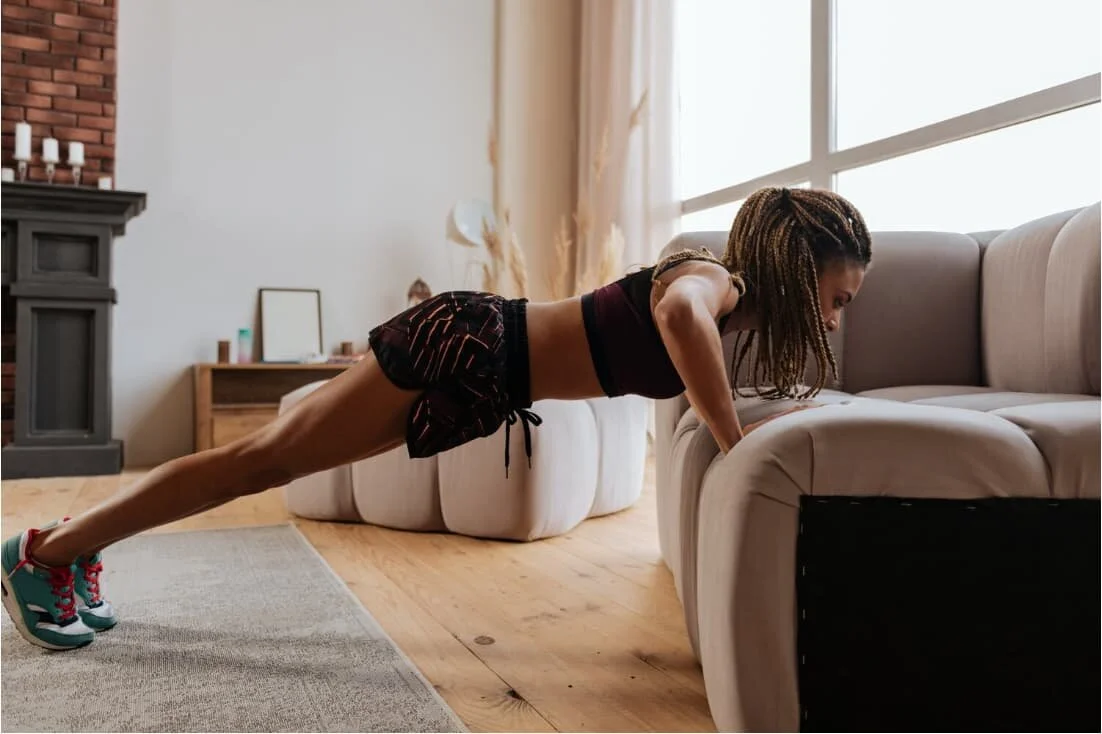Go For a Run! How to Start Running & Make It Stick
By: Suzanne Kvilhaug
Advertising Disclosure- Our content is free because we earn a commission when you click or make a purchase using our site.
If you asked me what percentage of people run in the U.S. before I looked it up, I really don’t know what I would have guessed. According to a 2020 report from the Sports & Fitness Industry Association, 15% of people run in the U.S. So that means that 85% of people do not run.
I started running when I was in my early 20’s. I didn’t do it with a coach, a concrete plan, or a lot of knowledge about running. One of my biggest roadblocks, in the beginning, was believing that I didn’t have the ability within me. If I had to guess what percentage of people have that same roadblock, I’d say it is about 90%. But if I was out there trying to run, a small part of me had to believe that I had the ability deep down. Luckily that small part won out and at 35 years old, running is my main form of exercise.
On a good week, I’ll run about 20-25 miles. To clarify- I’m not that fast of a runner, I don’t own a running watch and I describe myself as a “wellness runner”. What that means to me is that I’m running for my physical, mental and spiritual health - not to win the local road races or constantly improve my gait (it’s a thing…). Even though I’m never going to be an elite runner or even a methodical one, I’ve learned a lot through the years that can help someone who is looking to start running and to stick with it.
Find the right running sneakers
Finding the right running sneakers is like finding a needle in a haystack. Why is this process so difficult? Why are so many running sneakers a failure? Questions every runner is dying to know. And of course, finding the right pair of sneakers is probably the most necessary part of running. Running sneakers can be too narrow, too heavy, cause blisters, or simply be the wrong match. Be aware that when you do find the right sneakers, the brand could very likely stop making that model and you’ll be back to square one. So three tips on sneakers are - 1. Try them on in the store and walk around for a little bit to get a better idea 2. If you absolutely love the sneakers after a few runs, buy some more, and 3. Dedicate time to finding the right sneakers because if you look hard enough you’ll find them. My last sneaker quest took me about an entire week of going into every store that I could think of. The second I tried on one pair, I felt like Cinderella in the Reebok store because these babies fit perfectly. A couple of runs later my suspicions were confirmed and 2 more pairs were purchased immediately.
Discover routes that you look forward to running
Oh no, maybe there is something harder than finding the right sneakers to run with and that’s finding the right route. Routes can be boring, difficult, unsafe, or just blah. If you don’t love the routes you run, you’re going to fade sooner than later. It’s worth a short drive to run in a place that inspires you. Getting into nature can go a long way toward boosting your mood so if you can find a safe, woodsy path for runners near your home, you get double points. Seek out routes that you really connect with and drop the ones that you dread doing.
If you need music to run, make your playlist a priority
I understand that fast and elite runners do not usually listen to music. I also do not understand how anyone runs without listening to music. Either you’re a “music runner” (as someone once called me) or you’re not. Working on your playlist and being diligent about finding new songs that you love to run to can make a huge difference. No, I may not own a running watch but I do own an iPhone and it goes with me on every run. I can’t help but laugh at race photos of me with what appears to be my kitchen phone (Zack Morris is at the race!) but it’s the only way I can enjoy my runs. Music help any kind of workout, but when it comes to running in particular listening to some tunes can help you run longer, faster, and easier.
Once, I was at a race and right before it started a lady asked if I could put her headphones in a small pocket in the back of her shirt. She forgot her headphones adapter (oh the horror!) so she couldn’t use them. I sympathized big time and told her that I admired that she was still going to run the race without music. She looked at me confused and said “oh no I’m still going to have music, I’m going to play it out loud now.” Ah a great plan B I thought, she was clearly my kind of runner. So there she was blasting her playlist for all to hear while I had mine blasting in my ears.
Get mental mottos that motivate you
Sometimes I have no business showing up to a race but I show up anyways. My motto for that is “show and go”. There are times when I’m not really trained for a race and I am not in the mood to be there (can I get a Running Sucks t-shirt for this race?!) yet there I am. I’m well aware that the end result will be worth it, so I tell myself to just show and go. And wow does it get me into shape quicker than anything else could. Some people run races because they are in shape while others run races to get into shape. Whatever gets you out there, right?!
Learn how to master grit and balance simultaneously
Be flexible but not too flexible at the beginning while you are learning the basics. There is a certain amount of grit you have to find within yourself to run any distance. Balance as well. Being able to identify what is a real problem like an injury vs. what is just uncomfortable is key. Running injuries are possible and it’s up to you to be smart about keeping them at bay. I remember feeling some bizarre sensations at the beginning of distance training. Wait, did my ankle crack a little? Ok is that my calf pulsating up the hill? Should my quad be this tight right now? And so on. Whatever I started to feel, I would tune in and if it didn’t seem to be an injury I would push through. Almost always, things would eventually fade.
I don’t know the science of what all of that was but it seems as if it was my body getting used to running. A passage of rights if you will (woo high-five!). Rarely do things ever feel uncomfortable now and I know quickly if it’s serious or just a fleeting question mark. If you constantly stop because something doesn’t feel good, you won’t get too far. If you push through something that is really trouble, you won’t get too far. Make it a priority to learn your body so that you’ll be able to identify what’s simply a little uncomfortable and what’s truly problematic.
Be wary of taking too much time off
Once you build up a strong enough running base, the base will stay for some time…but not too much time. I’ve found that there is no way around this (eye roll) and if you stop running for even a short time frame, your fitness declines (thumbs down). The whole “it is what it is” applies big time here. As for how long is too long to take off? Everyone varies but even taking 10 days off can set you back a little. If I go too long without running at all, the return is dreadful but the good news is with consistency it does come back quickly. This doesn’t mean you have to be pounding the pavement daily in fear of losing what you’ve built, but it’s something to be mindful of.
Don’t let the mental game of increasing mileage keep you from trying
One of the hardest things when starting to run is feeling overwhelmed at the thought of adding more distance in. You’ve finally done 1 mile at a 12-minute pace, you’re barely breathing and someday you should be able to do 2 miles at the same pace?
Yes! That’s the part that can be difficult to mentally comprehend when you’re experiencing the infamous mental and physical pain that all runners go through. Don't let the pressure of wanting to grow stop you from celebrating the little victories, that 12-minute mile is an accomplishment all on it’s own. If that’s all you have in the tank, for now, that’s Ok. Now is now and later is later.
You may have mental barriers that exist at this moment. But the best part of a running routine is that with consistency and hard work, the future looks and feels a lot different than right now. Simply by putting one foot in front of the other, the process of running will get easier. You will be able to continually run further and stronger thanks to increasing stamina, muscle memory, and mentally pushing through. Let your body be your guide, it will tell you when you can do more and when it’s time to stop.
Settle into your natural sweet spot
After time passes and you’ve accomplished some major running goals, you’ll begin to learn what type of runner you are. Getting honest with what you really like to do is going to increase your chances of being out there running much more often. If you like to go on 5-mile runs, go on 5-mile runs. If you like to run a mix of short and long runs during the week, do exactly that. If you’re not a morning runner, don’t run in the morning. If you prefer to run with a group, set up a lot of group runs. Every runner is specific and if you do more of what you enjoy, you’ll stick with it and build on your strengths. If you create a framework around standard set running programs and rules that don’t feel natural to you, you’ll likely end up resenting it, losing interest, and quitting. Running longevity can become a reality if you do it on your own terms. Put the work in, stay consistent, remain true to what feels right and someday you’ll wake up knowing that you’ve become a runner. And although there were difficult moments, the overall journey was much more enjoyable and profound than you ever imagined.
More Articles You Might Like















There is a lot of good on social media; it’s a place where you can follow along and connect with like-minded individuals who share similar passions with yours. Checkout these 6 killer instagram accounts.